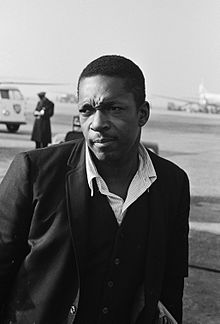Thelonious Monk: Straight, No Chaser
Thelonious Monk Straight, No Chaser 1988 is a documentary about the life of bebop pianist and composer Thelonious Monk. Produced by Clint Eastwood, Bruce Ricker, and directedcoproduced by Charlotte Zwerin, it features live performances by Monk and his group, and posthumous interviews with friends and family. The film was created when a large amount of archived footage of Monk was found in the 1980s.
After meeting on the streets of New York, director and cinematographer Christian Blackwood mentioned to film producer Bruce Ricker that he and his brother have done some work on jazz, referring to a onehour film special on Thelonious Monk that only aired once in Germany. After Ricker saw the footage, calling them the Dead Sea Scrolls of jazz, he suggested that they use the footage as the focus of a new documentary. Ricker brought in Charlotte Zwerin to help with the production of the film, which lead to four producers Ricker, Zwerin, and the Blackwood brothers. While they originally planned to enlist Monk for the film, he was not well enough to approach and his failing health led to his eventual death of a stroke on February 17, 1982. Blackwood filmed the funeral while Zwerin and Ricker planned to make a deal with the Monk estate. Monks death brought up complications on the films production, however, as the absence of a will and the fact that New York did not recognize common law marriages led to a lengthy process before Monks children could become the executors of the estate. Before any deals could be made by Zwerin and Ricker, the rights to Monks life story was bought by two young men, with a substantial chunk of money and no prior film experience, which delayed production of the film. After the delay Zwerin and Ricker struggled to fund the project and only raised enough money for a onehour television program with limited postTV distribution potential. Ricker eventually came into contact with Clint Eastwood and after finding out his appreciation of jazz and the bebop genre asked if he was interested in helping with production of the film. Clint Eastwood agreed to have his production studio Malpaso produce the film and gave them the budget needed to finish the film. Old footage from different network companies were used, along with the footage from the Blackwood brothers previous work. New footage was also shot, featuring interviews with his son, Thelonious Mon
Source: Wikipedia


